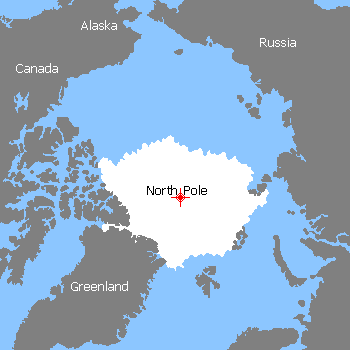by Larry
February, 2005An End to the Goldilocks EraSerious research into earth's climate is now almost two hundred years old, and in that time two interesting facts have come to light: first, that the planet's relatively recent (by which I mean from about the middle of the Miocene Age on, or starting roughly 10-13 million years ago) record, in great contrast to conditions during the so-called age of the dinosaurs and also during most of the rise of mammals, has been dominated by long periods of radical cold near the poles; and, second, that the rise of hominid species, including our own, has been intertwined with a consequent alternation of vast expansions of and temporary retreats from overwhelming glaciations. Indeed, even as we confront, in our immediate future, a period of global warming sufficient to greatly alter our environment and way of life, within at most a few thousand years a new period of glaciations seems unavoidable. Civilization has developed entirely within the present, comparatively brief, warmer interglacial period. It may take all of our ingenuity to maintain anything approaching a modern lifestyle once the ice age's more frigid conditions, having always held us in their grip, close in with continent covering ice sheets once again. Yet, for all its challenges, this millions of years old ice age is all our ancestors have ever known. Its succession of extreme cold periods followed by brief respites, may have led to apes branching off from other primates, the hominids branching off the family tree from other apes, such as the gorilla and chimpanzee with which we share so much DNA, and ultimately to the human species' unique development after those in our line were repeatedly forced to depend less on drought-ridden, shrinking forests and, in lieu of size, specialized athletic, or strength advantages, to use their ingenuity, against great odds, to survive.
Conditions are in place now for a significant temperature shift by the end of the 21st Century. Because of feedback loops, once those changes are well underway, it is unlikely we shall ever get the Humpty Dumpty of our current climate-environment system back together again. The effects of global warming will be most pronounced at the poles and, for various reasons, they will be particularly significant in the north polar region. By 2070 to 2100, the arctic ice cap will probably be only about 1/3 (or less) as large as it was in 1900. Winter temperatures in the coldest northern latitudes are expected by then to have increased 4-7°C on land, and 7-10°C over the sea (7.2-12.6°F, and 12.6-18°F, respectively). Yet the Gulf Stream current that warms northern Europe could well have been so reduced in its effects the British Isles would by that time be experiencing weather more like their latitudes in Canada or Siberia. At least a third of earth's present species could be extinct. Areas that are now the breadbaskets of the world may have relatively unreliable weather patterns and be more prone to drought.
Hurricanes, typhoons, or cyclones, whatever one calls them, will tend to occur more often, with their typical seasons starting earlier and ending later each year than only a few decades ago. Potable water will probably be in shorter supply. Yet the seas will be several centimeters or more higher, a difference that will be magnified out of proportion to its seeming insignificance on a ruler by storms, the large number of populated lowland areas worldwide, and the destruction of protective natural areas along many coasts. Human population will almost surely be at least half again what it is today, unless decimated by disease, starvation, or war, or limited by a much more systematic array of birth control measures than have been either available to or forced on young people and prospective parents to date. Our species will be noticing this "new world order" and, willy-nilly, adjusting to it long before the virtual elimination of the northern icecap. Are we up to the new challenges? I have no doubt that, just as our ancestors dealt admirably with the waves of change wrought by great fluctuations in the ice age's severity, so we shall have the capacity to cope, armed now as we are with advanced technology and with political, economic, and social precedents for international cooperation. Yet, as with our evolutionary forebears, we may be altered in the process. Close on the heels of Homo sapiens' adaptation to global warming, an adjustment that could take a few millennia, even stronger forces, such as the earth's eccentric and slightly elliptical orbit taking it successively farther from the sun for part of each year, will bring a new icy plunge of the planet into the next, inevitable glaciations. As in the Chinese curse, we and our kind are about to be living in rather interesting times. And as Bob Dylan pointed out, "The times they are a-changin'."
Arctic Climate Impact Assessment. Arctic Council, 2004. J. Gribbin and M. Gribbin, Ice Age, Barnes and Noble Books, New York, 2001. Melting at the Top. Rodger Doyle in Scientific American, Vol. 292, No 2, page 31; February 2005. |

